Memory Performance: 16GB DDR3-1333 to DDR3-2400 on Ivy Bridge IGP with G.Skill
by Ian Cutress on October 18, 2012 12:00 PM EST- Posted in
- Memory
- G.Skill
- Ivy Bridge
- DDR3
The realm of DDR3-2400 MHz memory is reserved for two types of setup – strong Sandy Bridge and Sandy Bridge-E processors, or Ivy Bridge processors. The former can depend on the motherboard as well – within my motherboard testing I was finding that some motherboards enjoyed running at DDR3-2400 with an appropriate processor, whereas others needed a bump in voltages to get to work. For Ivy Bridge processors though, DDR3-2400 should be a walk in the park – based on overclocking results it seems that processors produced in Malaysia have good memory controllers, whereas ones made in Costa Rica have better processor speed/voltage characteristics (though your mileage may vary). So having a high and stable memory speed is ideally paired with an Ivy Bridge processor at this point.
As you can imagine, if DDR3-2133 was getting expensive, then DDR3-2400 is even much more so, even if the kit is rated C10 rather than C9. The additional cost comes mainly from binning – i.e. making sure that there are enough ICs to go into these memory kits. A 4x4 GB kit needs 32 ICs capable of running this speed, and to get those 32 may require north of 500 ICs to be tested (the rest get binned into other slower modules), though the exact numbers are obviously a well kept secret from G.Skill. If I recall, in the early days of Nehalem, the high end 2000 C8 modules were literally 1 in 100 that passed the tests, and hence the exorbitant price at the time. This DDR3-2400 C10 kit comes in at $145, not much of a leap from DDR3-2133 C9 at $130, but the benchmarks will paint a truer picture of how much this difference matters later in the review.
Visual Inspection
The DDR3-2400 C10 kit today provided by G.Skill covers its TridentX branding. TridentX is one notch above RipjawsZ, and spans kits from DDR3-2400 C9 to DDR3-2800 C11. The main features on the kit (aside from the speeds) are the heatsinks, to which G.Skill have added a detachable fin. Without the fin, the module is approximately 9mm above the module, and with the fin the total height is 22mm above the PCB. That is a lot of height for a memory module that in 99% of circumstances would not produce enough temperature to trouble any build.
In order to remove the fin there is a screw at each end of the module, and the fin slides off effortlessly. The fins fit very well, but upon attempting to reattach a fin I was unable to get it on as securely as it came out of the box, leaving a little wobble in the fin. There is no cause for alarm if you get a module with a wobbly fin – nothing is wrong, and it will not affect the heat dissipation as much as most users may think. Most modules output a few watts at best, so dissipation of several watts of energy without a fin is simple enough.
Putting such a large module in our TRUE Copper scenario was a recipe for disaster:
Even putting the module in the second slot faired no better:
All the testing for this review was done on a ASUS P8Z77-V Premium motherboard with the Intel stock cooler, so module movement is not much an issue in that case, but big air coolers still get a lot of usage (and is more often than not an investment over several updates), so there are things to consider when purchasing memory.
JEDEC + XMP Settings
| G.Skill | |||||
| Kit Speed | 1333 | 1600 | 1866 | 2133 | 2400 |
| Subtimings | 9-9-9-24 2T | 9-9-9-24 2T | 9-10-9-28 2T | 9-11-10-28 2T | 10-12-12-31 2T |
| Price | $75 | $80 | $95 | $130 | $145 |
| XMP | No | Yes | Yes | Yes | Yes |
| Size | 4 x 4 GB | 4 x 4 GB | 4 x 4 GB | 4 x 4 GB | 4 x 4 GB |
|
|
|||||
| MHz | 1333 | 1600 | 1867 | 2134 | 2401 |
| Voltage | 1.500 | 1.500 | 1.500 | 1.650 | 1.650 |
| tCL | 9 | 9 | 9 | 9 | 10 |
| tRCD | 9 | 9 | 10 | 11 | 12 |
| tRP | 9 | 9 | 9 | 10 | 12 |
| tRAS | 24 | 24 | 28 | 28 | 31 |
| tRC | 33 | 33 | 37 | 38 | 43 |
| tWR | 10 | 12 | 14 | 16 | 16 |
| tRRD | 4 | 5 | 5 | 6 | 7/6 |
| tRFC | 107 | 128 | 150 | 171 | 313 |
| tWTR | 5 | 6 | 8/7 | 9/8 | 10/9 |
| tRTP | 5 | 6 | 8/7 | 9/8 | 10/9 |
| tFAW | 20 | 24 | 24 | 25 | 26 |
| tCWL | - | 7 | 7 | 7 | 7 |
| CR | - | 2 | 2 | 2 | 2 |


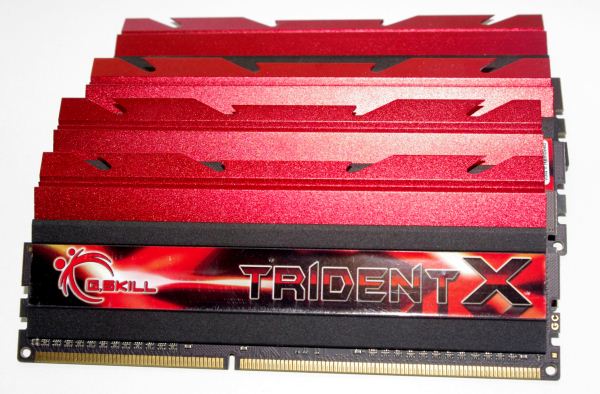
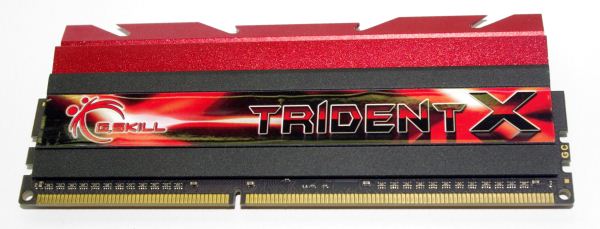
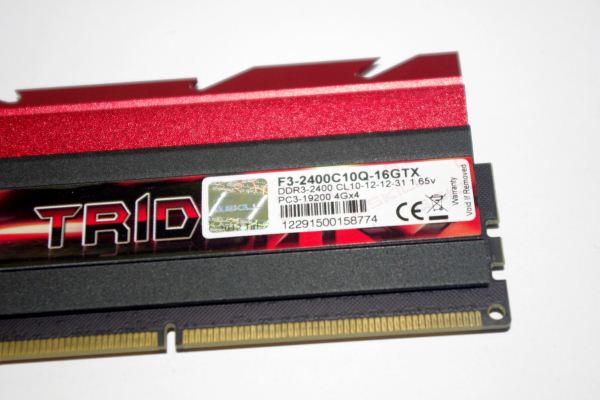
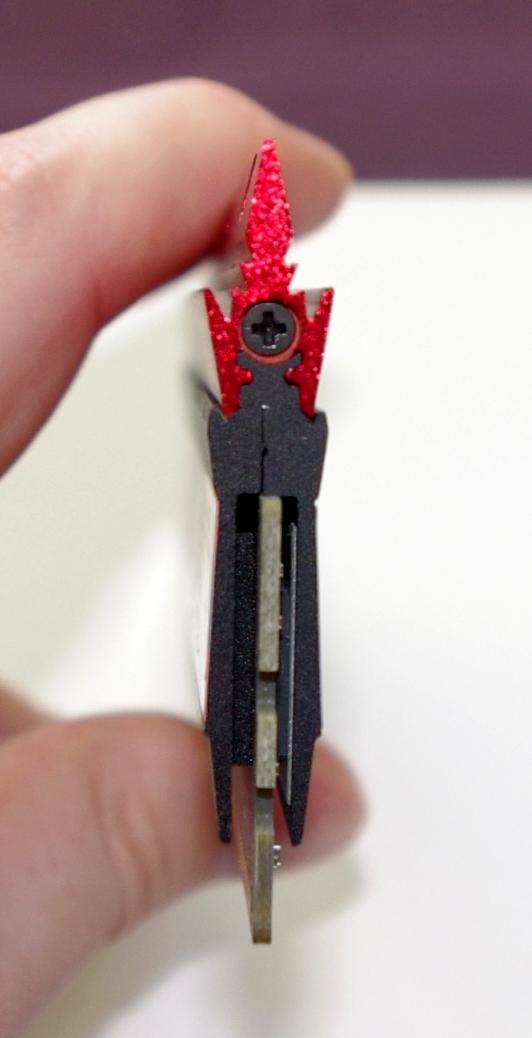


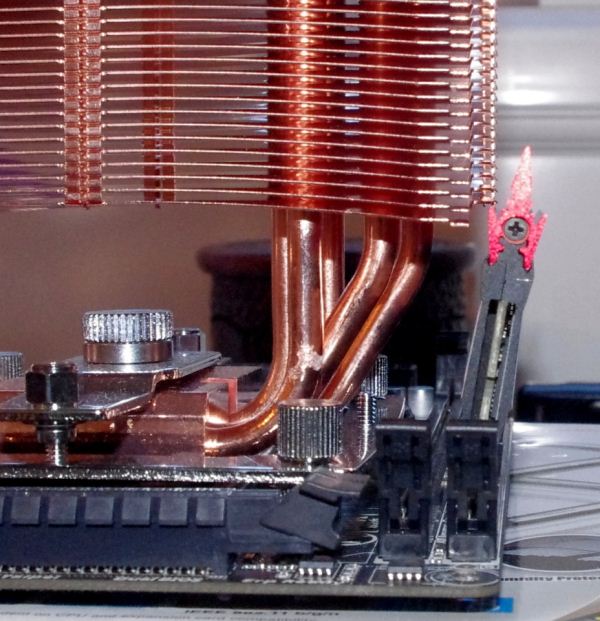















114 Comments
View All Comments
svdb - Tuesday, October 23, 2012 - link
This article is pointless and debating is futile. Everybody knows that ORANGE memory modules are always faster than BLACK one, but not as fast as RED ones! Duh...The same with cars...
jonjonjonj - Friday, October 26, 2012 - link
you keep saying that a big part of the heat sinks are too "prevent the competition from knowing what ICs are under the hood". do you really think if a competitor or anyone for that matter who wanted to know what ICs were being used are going to say damn we cant find out what the ICs are because the $45 memory has a heat sink? im pretty sure they are going to buy a kit and rip them apart.editorsorgtfo - Tuesday, October 14, 2014 - link
Sean, what a willie-brained banger-spanker you are! You probably still piss in your shorts when you discover that someone you've irked has smeared buggers on the screen of your monitor. "No one gives a shit about APU you moron......these are desktop tests!" I, for one, give a shit about APUs, you lummox, since I am building a top-quality box around an A10 7850K and a G1.Sniper A88X. Gamers who yank a joystick with one hand and wank off with the other aren't the only people that want a kickin' computer. My entire life isn't geared toward FPS, RTS or T, or MMORPG pursuits, nor do I do anything else that is graphics-processing intensive, like video editing, rendering, Bitcoin mining, etc., etc., so I don't need high-powered graphics, beyond what AMD's Dual Graphics with a Radeon R7 250 will achieve. My intent is to use my new APU machine for audio recording, and I'd like to be able to get a really good overall picture of how a Kaveri system will behave using 16 or 32GB of various brands of DDR3 1866 or 2133 CL8 or 9 @ 1.5V or under SDRAM, possibly using AMD's RAMDisk software, with a very good (250GB or larger Samsung 840 EVO or better SSD), and preferably using audio-oriented real and synthetic benchmarks, because Intel has the computer-video-game-playing world by the goolies, and to most gamers, winning is everything, so they go with Intel, never once thinking about how less than 2 decades ago, there was a third big player in the processor world: VIA! They got squeezed out of the desktop competition by Intel and AMD, and we are the worse for it. Anyway, this is not to disparage Ian's testing and write-up for this review (good on yer, mate!), because he used what he had on hand. But you, Sean -- why don't you just keep your witless gob shut if you don't have something interesting, enlighting, thought-provoking, useful, helpful, amusing... i.e., POSITIVE! to contribute? "AMD is a decade behind Intel, in processor technology and instructions, it really doesn't matter what AMD attempts to do...." For f*ck's sake -- get an effing life, kid! Then, maybe you'd finally get laid, and someday, even have a girlfriend and a car, instead of Five-Finger Mary and a skateboard!exodius - Monday, February 2, 2015 - link
You got one of the calculations wrong:DDR3-1866 11-11-11 has a Cycle Time of 1.07 ns and a Bit Time of 0.536 ns
The time to read one word should be 1.08 * 11 = 11.88 ns (not 11.79)
The time to read eight words should be 11.88 + 7 * 0.536 = 15.632 ns (not 15.54)
Unless i'm missing something